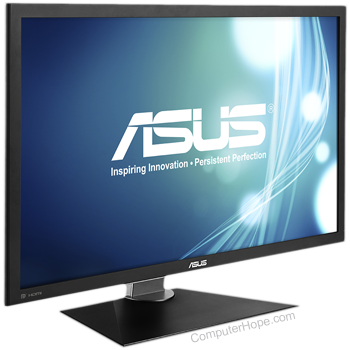LED monitor

Short for light-emitting diode monitor, an LED monitor or LED display is a flat screen, flat-panel computer monitor or television. It has a short depth and is light in terms of weight. The actual difference between this and a typical LCD (liquid-crystal display) monitor is the backlighting. The first LCD monitors used CCFL (cold cathode fluorescent lighting) instead of LEDs (light-emitting diodes) to illuminate the screen.
LED monitor advantages
LED monitors offer many benefits compared to those that are CCFL backlit including:
- Often less expensive.
- Broader dimming range.
- Overall more reliable.
- They run at a lower temperature, and consume less power, as few as 20 watts.
- Higher dynamic contrast ratio.
- Longer lifespan and less environmental impact.
History of LED displays
The first LED display is generally considered to have been developed by James P. Mitchell in 1977. The first LED display prototype was shown to the public at the SEF (Science and Engineering Fair) in Iowa on March 18, 1978. It was shown again at the SEF in Anaheim California on May 8, 1978. The prototype was 1/4-inch thick and received awards from General Motors and NASA.
Computer abbreviations, Contrast ratio, Flat-panel, Hardware terms, LED, Refresh rate
